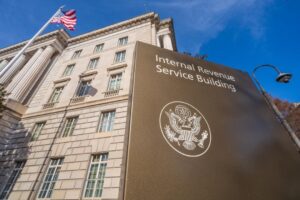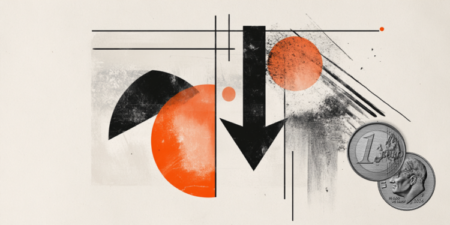- The Japanese Yen gains some positive traction following an Asian session downtick.
- Bets for more interest rate hikes by the BoJ continue to act as a tailwind for the JPY.
- The divergent BoJ-Fed expectations contribute to capping the upside for USD/JPY.
The Japanese Yen (JPY) attracts some buyers following an Asian session dip against its American counterpart and reverses a part of the previous day’s slide amid hawkish BoJ expectations. Investors now seem convinced that the Bank of Japan (BoJ) will hike interest rates further amid signs of broadening inflationary pressures in Japan, which led to the recent significant rise in Japanese bond yields. The resultant narrowing of the rate differential between Japan and other countries continues to underpin the lower-yielding JPY.
Meanwhile, a delay in the implementation of Trump’s reciprocal tariffs and the optimism over talks to end the Russia-Ukraine war remains supportive of a positive tone around the equity markets. This might hold back traders from placing aggressive bullish bets around the safe-haven JPY and act as a tailwind for the USD/JPY pair. Investors might further opt to move to the sidelines ahead of the release of the FOMC minutes later today. In the meantime, a modest US Dollar (USD) downtick should cap the currency pair.
Japanese Yen continues to draw support from rising BoJ rate hike bets
- Bank of Japan Governor Kazuo Ueda and Deputy Governor Himino recently signaled the possibility of another rate hike if the economy and prices align with the projections.
- Adding to this, BoJ Board Member Hajime Takata said on Wednesday that the central bank must gradually shift policy to avoid upside price risks from materializing.
- Moreover, Japan’s upbeat Q4 Gross Domestic Product (GDP) print on Monday boosted bets for further policy tightening by the BoJ amid signs of persistently high inflation.
- The International Monetary Fund estimates Japan’s neutral rate to be between 1% and 2%, and anticipates the BoJ to raise rates to around the mid-point of 1.5% by the end of 2027.
- The yield on the benchmark 10-year Japanese government bond reached levels not seen since 2010 earlier this week, which should continue to underpin the Japanese Yen.
- Officials from the US and Russia held a crucial meeting in Saudi Arabia to discuss ways to halt the almost three-year-old war in Ukraine and also agreed to hold more talks.
- Furthermore, a delay in the implementation of US President Donald Trump’s reciprocal tariffs remains supportive of a positive risk tone and undermines the safe-haven JPY.
- Market participants now look forward to the release of minutes of the Federal Reserve’s latest policy meeting in January for fresh cues about the future interest rate-cut path.
USD/JPY bears have the upper hand while below 200-day SMA barrier
From a technical perspective, any subsequent move up is more likely to face stiff resistance near the 200-day Simple Moving Average (SMA), currently pegged near the 152.65 region. This is followed by the 153.00 mark and the 100-day SMA barrier, around the 153.30-153.35 zone, which if cleared decisively should pave the way for additional gains. The USD/JPY pair might then accelerate the positive move towards reclaiming the 154.00 mark en route to the 154.45-154.50 supply zone, last week’s swing high, around the 154.75-154.80 region, and the 155.00 psychological mark.
On the flip side, weakness below the 151.75 area, or the Asian session trough, could extend towards the overnight swing low, around the 151.25 region. Some follow-through selling, leading to a subsequent breakdown below the 151.00 mark, will be seen as a fresh trigger for bearish traders. The USD/JPY pair might then accelerate the fall towards the 150.60 intermediate support before eventually dropping to the 150.00 psychological mark. The downward trajectory could extend further towards the 149.60-149.55 region en route to the 149.00 mark and the December 2024 low, around the 148.65 region.
Bank of Japan FAQs
The Bank of Japan (BoJ) is the Japanese central bank, which sets monetary policy in the country. Its mandate is to issue banknotes and carry out currency and monetary control to ensure price stability, which means an inflation target of around 2%.
The Bank of Japan embarked in an ultra-loose monetary policy in 2013 in order to stimulate the economy and fuel inflation amid a low-inflationary environment. The bank’s policy is based on Quantitative and Qualitative Easing (QQE), or printing notes to buy assets such as government or corporate bonds to provide liquidity. In 2016, the bank doubled down on its strategy and further loosened policy by first introducing negative interest rates and then directly controlling the yield of its 10-year government bonds. In March 2024, the BoJ lifted interest rates, effectively retreating from the ultra-loose monetary policy stance.
The Bank’s massive stimulus caused the Yen to depreciate against its main currency peers. This process exacerbated in 2022 and 2023 due to an increasing policy divergence between the Bank of Japan and other main central banks, which opted to increase interest rates sharply to fight decades-high levels of inflation. The BoJ’s policy led to a widening differential with other currencies, dragging down the value of the Yen. This trend partly reversed in 2024, when the BoJ decided to abandon its ultra-loose policy stance.
A weaker Yen and the spike in global energy prices led to an increase in Japanese inflation, which exceeded the BoJ’s 2% target. The prospect of rising salaries in the country – a key element fuelling inflation – also contributed to the move.
Read the full article here
















